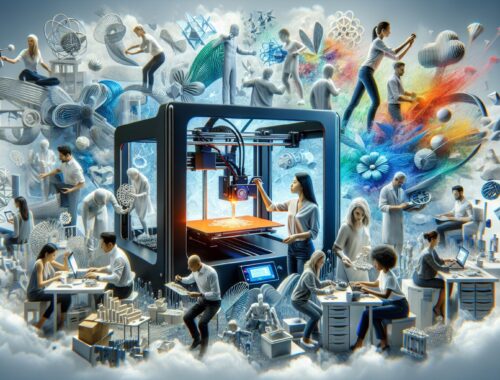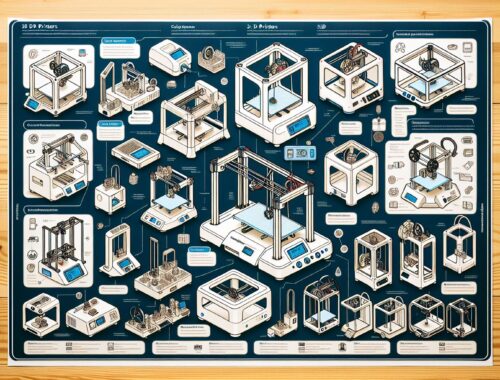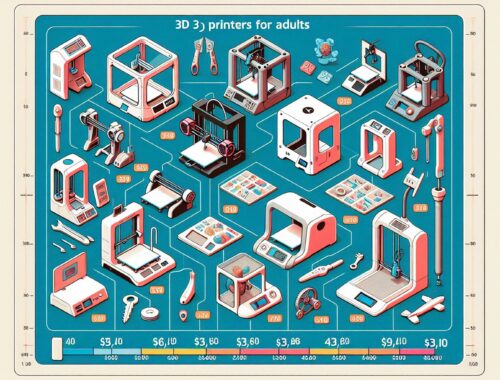The Power of 3D Modeling and 3D Printing in Education
In today’s digital age, the possibilities for innovation and creativity seem limitless. College students have access to incredible tools that can bring their ideas to life in ways that were once unimaginable. One such tool that has gained popularity among students is 3D modeling and 3D printing. These technologies have revolutionized various fields, from engineering to architecture, and continue to inspire students to push the boundaries of their imaginations. In this article, we will explore the power of 3D modeling and 3D printing for college students, and how they can utilize these tools to enhance their educational journey.
The Art of 3D Modeling
3D modeling is the process of creating a digital representation of a three-dimensional object using specialized software. It provides college students with a unique opportunity to showcase their creativity and develop their design skills. Whether it’s designing intricate architectural structures or creating characters for video games, 3D modeling offers a platform for students to explore their artistic talents.
One exciting aspect of 3D modeling is toy creation. College students can design and develop their own toys, bringing their childhood dreams to life. With 3D modeling software, they can build unique characters and objects, and even modify existing designs to their liking. This hands-on approach not only allows students to exercise their creativity but also enhances their problem-solving skills as they navigate through the intricacies of the modeling process.
Beyond toy creation, 3D modeling has practical applications in various fields. Architecture students can construct detailed building models, allowing them to visualize and refine their designs. Engineering students can use 3D modeling to prototype and test their ideas, revolutionizing the manufacturing process. The ability to create accurate and precise virtual representations of objects has transformed the way we bring ideas to life.
From Virtual to Reality: 3D Printing
While 3D modeling allows us to visualize and create virtual objects, 3D printing takes this concept a step further by turning those virtual designs into physical reality. Also known as additive manufacturing, 3D printing enables the creation of tangible objects layer by layer. College students can manufacture and bring their designs to life with ease.
The 3D printing process begins with a digital model created using 3D modeling software. The model is then sliced into thin layers, and these layers are sent to a 3D printer. The printer builds the object layer by layer, using materials such as plastic, metal, or even biomaterials. The result is a physical manifestation of the student’s design.
The possibilities offered by 3D printing are limited only by the student’s imagination. College students can create prototypes for products they envision, test their designs, and even manufacture small-scale products. This technology has the potential to revolutionize industries such as medicine, fashion, and manufacturing, where customization and personalization are becoming the norm.
Merging Theory and Practice: Practical Applications
As college students, combining theory with practical application is crucial for a well-rounded education. 3D modeling and printing provide the perfect opportunity to bridge this gap and enhance the learning experience. Here are a few examples of how these technologies can be incorporated into the educational journey:
1. STEM Education
3D modeling and printing bring excitement and hands-on experience to STEM (Science, Technology, Engineering, and Mathematics) education. By designing and printing objects related to their coursework, students can better understand complex concepts. For example, in biology, students can 3D print models of cells or organs to study their structures closely. In engineering, they can build prototypes of their designs to test their functionality. The practical application of these concepts deepens understanding and fosters creativity and critical thinking.
2. Art and Design
For art and design students, 3D modeling and printing offer a new realm of possibilities. Sculptors can now bring their creations to life using additive manufacturing techniques. Graphic designers can experiment with tangible objects that incorporate their digital designs. These technologies allow students to explore new mediums, challenge traditional artistic boundaries, and push the limits of their creative expression.
3. Entrepreneurship and Product Development
College students with entrepreneurial ambitions can harness the power of 3D modeling and printing to bring their product ideas to fruition. The ability to quickly prototype and test designs significantly reduces costs and time compared to traditional manufacturing methods. Students can refine their concepts based on feedback, iterate their designs, and ultimately manufacture their products in small batches. This empowers them to launch their ventures and take their first steps into the world of entrepreneurship.
The Future is Here: Embrace the Possibilities
In conclusion, 3D modeling and 3D printing have revolutionized education by providing college students with powerful tools to unleash their creativity and enhance their learning experience. From designing toys to creating functional prototypes, these technologies offer endless possibilities. By incorporating 3D modeling and printing into various disciplines, colleges and universities can equip their students with the skills they need to thrive in the rapidly evolving digital landscape.
As a college student, you have the opportunity to dive into the world of 3D modeling and printing. Embrace this technological frontier, experiment, and push the boundaries of your imagination. The power to create, design, and manufacture lies at your fingertips. Together, let’s shape the future, one layer at a time.
You May Also Like

The World of 3D Modeling and Printing: A Gateway to Creativity and Skills Development
January 7, 2024
An Introduction to Various Types of 3D Printers: A Guide for College Students
February 8, 2024
